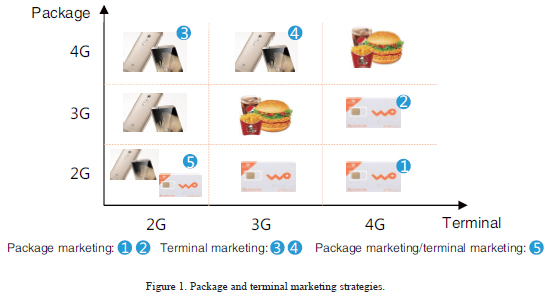ZTE’s SOC Improves Operator Revenues
With the development of mobile internet, OTTs are grabbing a bigger slice of the telecom market. It has become one of the most important challenges for operators to take effective marketing initiatives to attract new users and increase service usage.
ZTE has proposed the customer experience-centric O&M concept and developed service operations center (SOC). ZTE’s SOC includes service indicator system, SOC platform, SLA system and architecture change system.
Relying on its big data analysis capabilities, in accordance with business needs of operators, ZTE taps the value of massive telecom data, and provides accurate marketing recommendations for operators to improve operating revenues.
This article describes three dimensions of how ZTE’s SOC help operators improve operating revenues: channel distribution guide, package marketing, and terminal marketing. Channel distribution guide provides data for operators based on user resident area identification and traffic distribution, so that operators can achieve the highest return on investment (ROI). Package marketing and terminal marketing reduce potential marketing user groups through user attributes and behavior analysis, and then operators can carry out precision marketing with limited resources.
Currently, the ideal channel distribution principles involve overall layout, user orientation, supply-and-demand matching, reasonable input and output, and key areas priority. How to implement these principles is the key for operators to select channel distribution programs.
Generally, operators select outlets based on regional pedestrian flow and the commercial nature of stores. The areas with large stream of people and stores with relevance to the telecom industry are usually selected for channel distribution. However, from the viewpoint of the operational effectiveness, the operating conditions of some channel outlets are not ideal .
In this case, ZTE’s SOC provides accurate recommendations for operator channel distribution through user resident area identification, which identifies user resident areas by analyzing user frequent resident cells, the most commonly-used services, and usage periods.
The user resident area distribution and high-traffic base stations distribution enable operators to verify the rationality of existing channel outlets, and indicate new channel outlets. Some operators established new channel outlets based on ZTE’s recommendations, and the success rate of user service subscription has been improved significantly.
The multi-dimensional analysis is implemented by the following steps:
According to service packages and terminal types, users are divided into nine groups, including 2G-package 2G-terminal users and 2G-package 3G-terminal users. Different marketing strategies are made for different user groups (Fig. 1).

● Traffic usage: Through comparison, the users whose average monthly traffic is much higher than their package traffic are identified as the objects of upgrade. In addition, 2G/3G terminal users with high-traffic can be set as the objects of terminal marketing.
● User age distribution: Considering consumption capacity and difficulty of guiding users in different ages, users are divided into three groups: the young, middle-aged, and elderly. The marketing is conducted in accordance with user priority.
● ARPU distribution: Through comparison, the users whose ARPU is much higher than their package fees are identified as the objects of upgrade. ARPU also indicates user consumption capacity, and serves as reference for terminal upgrade.
Operators can customize feature vectors and standard values according to different user groups, and finally select the potential objects of package upgrade and terminal marketing in multiple dimensions (Fig. 2).

Package marketing targets three user groups: 2G-package 2G-terminal users, 2G-package 4G-
terminal users, and 3G-package 4G-terminal users.
● First, by analyzing users’ ARPU, in accordance with users’ package fees, the user groups whose average monthly consumption is much higher than their package fees are identified.
● Second, according to users’ traffic usage and voice service habits, the packages with a higher matching degree are selected, and accurate recommendations are made for potential users.
● Finally, the marketing is conducted based on user priority, which is determined by user age.
For instance, to develop the internet surfing habits of 2G-package 4G-terminal users, the users (from 15 to 55 years old) whose monthly traffic usage is more than 100 MB and monthly ARPU is more than RMB 50 are selected as marketing targets, and the marketing is conducted according to user priority: level 1: 25–35 years old; level 2: 15–25 and 35–45 years old; and level 3: 45–55 years old.
This strategy has been adopted by operators, and some of the 2G-package users have been upgraded. Compared with random call inquiry without data analysis, the marketing success rate of operators has been greatly improved.
Terminal marketing can bring high returns for operators. It enables operators to reduce costs through centralized procurement and expand user base with high terminal subsidies. In addition, terminal marketing of the existing users optimizes the terminal structure, thereby enhancing the penetration of high-end terminals.
ZTE’s SOC explores potential users for terminal upgrade by analyzing terminal types and user traffic. Considering the terminal costs and subsidies, as well as package fees and user age, ZTE’s SOC identifies the marketing objects, optimizes the marketing process, and develops users’ internet use habits through terminal upgrade, thereby improving customer experience and user loyalty.
For instance, to improve the customer experience of 4G-package 2G-terminal users, the users (from 20 to 45 years old) whose monthly traffic usage is more than 100 MB and monthly ARPU is more than RMB 75 are selected as marketing targets, and the marketing is conducted based on user priority: level 1: 25–40 years old; level 2: 40–45 years old; and level 3: 20–25 years old.
In some regions, 2G-terminal users with low package fees take a relatively high proportion. By analyzing data and terminal subsidy policies, ZTE’s SOC enables operators to identify the user groups for terminal upgrade and implement precision marketing with limited resources, so as to increase the success rate of marketing.